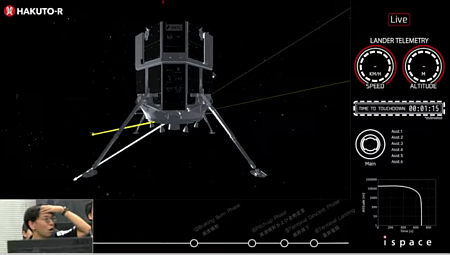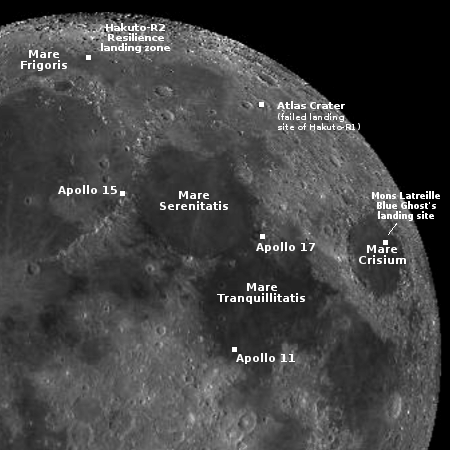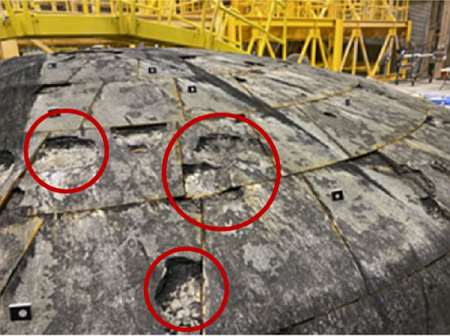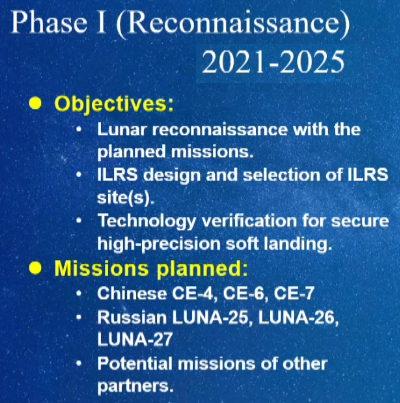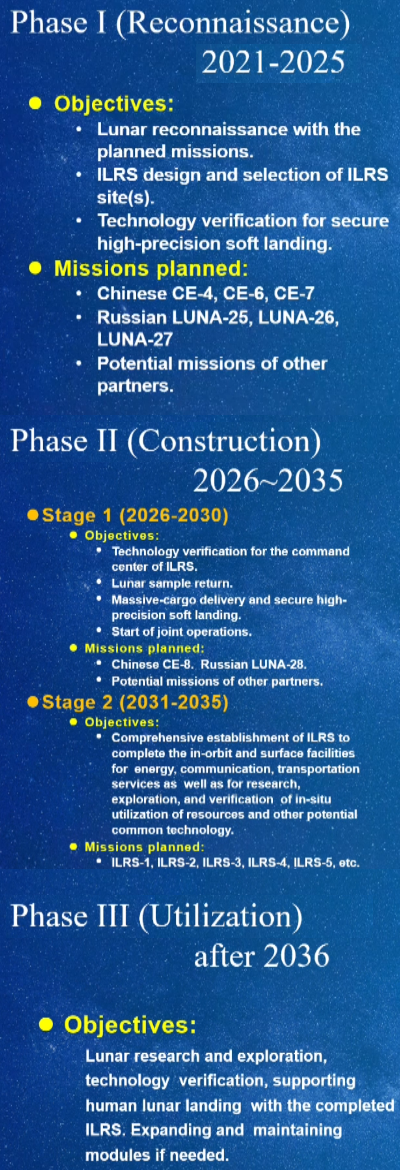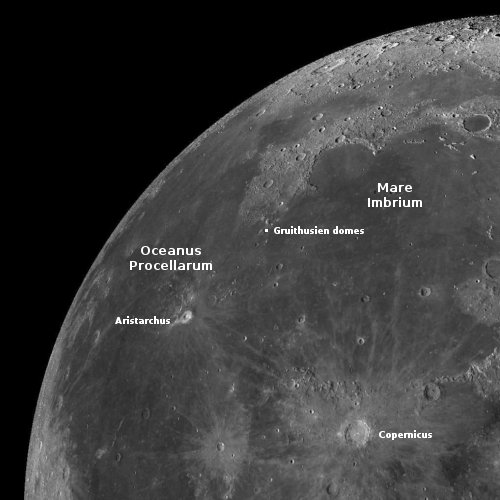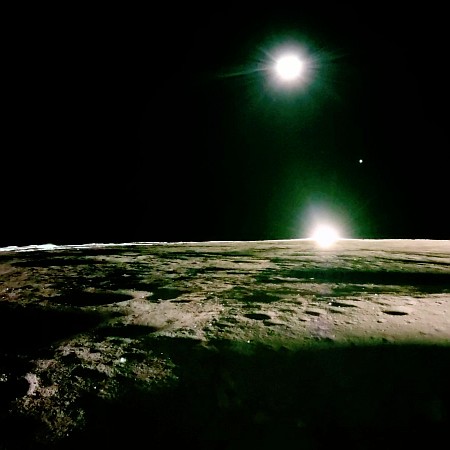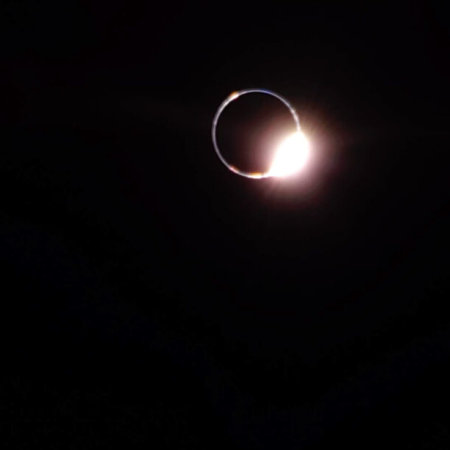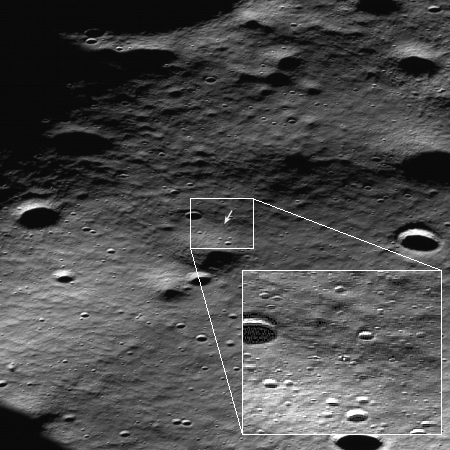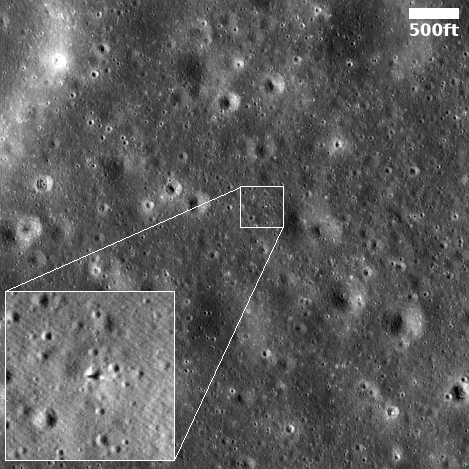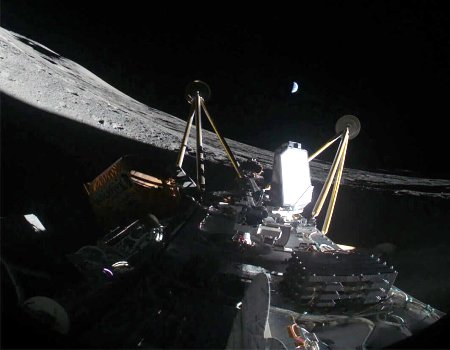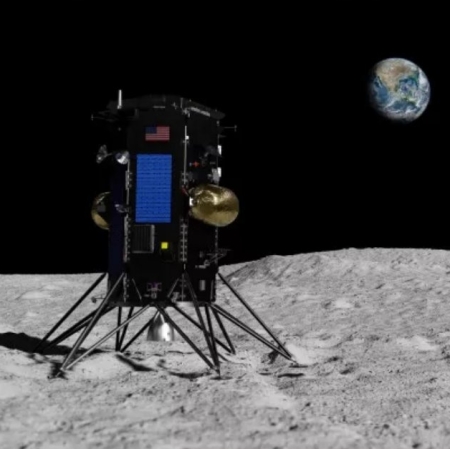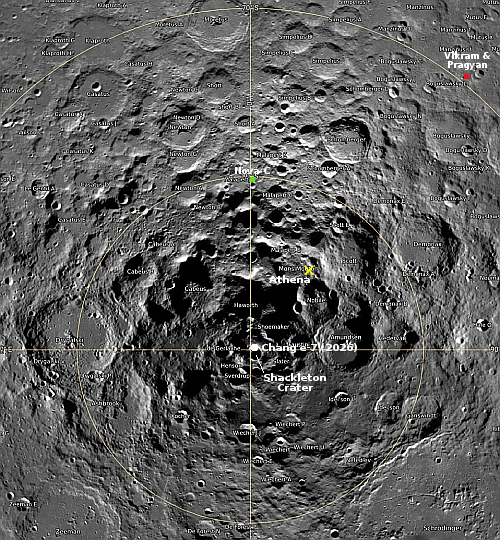Ispace confirms that its Resilience lunar lander has failed, apparently crashing on the Moon
According to an update issued several hours after the planned landing, the Japanese lunar lander startup confirmed that its Resilience lunar lander apparently crashed in its attempt to soft land on the Moon.
Ispace engineers at the HAKUTO-R Mission Control Center in Nihonbashi, Tokyo, transmitted commands to execute the landing sequence at 3:13 a.m. on June 6, 2025. The RESILIENCE lander then began the descent phase. The lander descended from an altitude of approximately 100 km to approximately 20 km, and then successfully fired its main engine as planned to begin deceleration. While the lander’s attitude was confirmed to be nearly vertical, telemetry was lost thereafter, and no data indicating a successful landing was received, even after the scheduled landing time had passed.
Based on the currently available data, the Mission Control Center has been able to confirm the following: The laser rangefinder used to measure the distance to the lunar surface experienced delays in obtaining valid measurement values. As a result, the lander was unable to decelerate sufficiently to reach the required speed for the planned lunar landing. Based on these circumstances, it is currently assumed that the lander likely performed a hard landing on the lunar surface.
After communication with the lander was lost, a command was sent to reboot the lander, but communication was unable to be re-established.
This explanation fits with the very high velocity numbers seen as the spacecraft approached the surface, much higher than intended.
Ispace has now attempted to land on the Moon twice, with both landers crashing upon approach. In this sense its record is not quite as good as the American startup Intuitive Machines, which had two landers touch down but immediately tip over, causing both to fail.
Ispace presently has three contracts to build landers with NASA, JAXA (Japan’s space agency), and the European Space Agency. The American lander is being built in partnership with the company Draper. Whether this second failure today will impact any of those contracts is uncertain at this time.
According to an update issued several hours after the planned landing, the Japanese lunar lander startup confirmed that its Resilience lunar lander apparently crashed in its attempt to soft land on the Moon.
Ispace engineers at the HAKUTO-R Mission Control Center in Nihonbashi, Tokyo, transmitted commands to execute the landing sequence at 3:13 a.m. on June 6, 2025. The RESILIENCE lander then began the descent phase. The lander descended from an altitude of approximately 100 km to approximately 20 km, and then successfully fired its main engine as planned to begin deceleration. While the lander’s attitude was confirmed to be nearly vertical, telemetry was lost thereafter, and no data indicating a successful landing was received, even after the scheduled landing time had passed.
Based on the currently available data, the Mission Control Center has been able to confirm the following: The laser rangefinder used to measure the distance to the lunar surface experienced delays in obtaining valid measurement values. As a result, the lander was unable to decelerate sufficiently to reach the required speed for the planned lunar landing. Based on these circumstances, it is currently assumed that the lander likely performed a hard landing on the lunar surface.
After communication with the lander was lost, a command was sent to reboot the lander, but communication was unable to be re-established.
This explanation fits with the very high velocity numbers seen as the spacecraft approached the surface, much higher than intended.
Ispace has now attempted to land on the Moon twice, with both landers crashing upon approach. In this sense its record is not quite as good as the American startup Intuitive Machines, which had two landers touch down but immediately tip over, causing both to fail.
Ispace presently has three contracts to build landers with NASA, JAXA (Japan’s space agency), and the European Space Agency. The American lander is being built in partnership with the company Draper. Whether this second failure today will impact any of those contracts is uncertain at this time.

